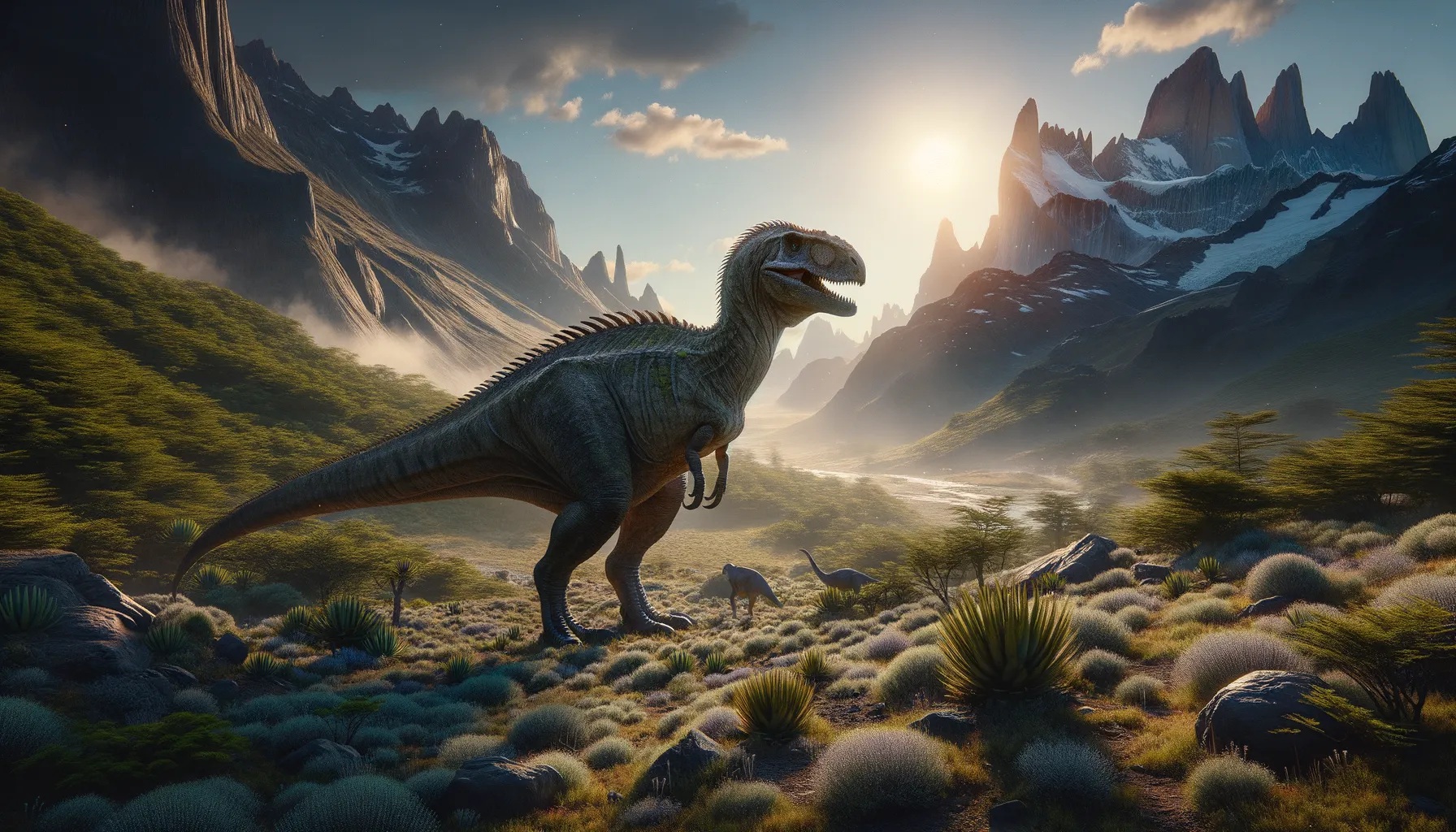
Sarmientosaurus
Gentle giant of the ancient world.
Period
Cretaceous
Length
Around 12 meters long.
Height
Roughly 6 meters at the shoulder.
Weight
Approximately 10 tons.
Sarmientosaurus belonged to the titanosaur group and was a massive, plant-eating dinosaur that roamed South America during the Cretaceous period. Known for its large body and relatively small head, its fossilized remains provide insight into the life of these gentle giants. This dinosaur played a significant part in the ecosystem as a herbivore, and its discovery shed light on the diversity of sauropods in ancient Patagonia.
Diet
Sarmientosaurus was a herbivore, feeding exclusively on plants. Its diet consisted mostly of foliage high in trees, thanks to its long neck.
Hunting
Being a herbivore, it did not hunt. Instead, it foraged for and consumed a variety of vegetation available in its environment.
Environmental challenges
Sarmientosaurus faced environmental challenges such as predators like theropods, as well as shifts in climate and plant distribution. Changes in landscape due to volcanic activity could have affected its habitat. Seismic activities might have also influenced their living conditions, impacting food availability.
Speed
Likely slow due to large size.
Lifespan
Potentially several decades.
First discovery
First discovered in Argentina in 2016.
Fun Facts
- Sarmientosaurus is a type of titanosaur, a group of long-necked dinosaurs that were among the largest creatures to ever walk the Earth.
- It was discovered in Patagonia, Argentina, a region famous for its rich fossil beds.
- Sarmientosaurus lived approximately 95 million years ago during the Cretaceous period.
- Despite its massive body, Sarmientosaurus had a relatively small head compared to other dinosaurs.
- The discovery of Sarmientosaurus included a well-preserved braincase, providing scientists with valuable insights into its sensory capabilities.
- Its name, Sarmientosaurus, honors the town of Sarmiento, near where its fossils were found.
- Researchers believe that Sarmientosaurus may have had good hearing and balance, thanks to the structure of its inner ear.
Growth and Development
Sarmientosaurus likely grew steadily over several years to reach its massive size. Like other sauropods, it might have had a long juvenile phase where it was vulnerable to predators. Its growth would involve substantial intake of plant matter to sustain its extensive body.
Habitat
It inhabited the semi-arid regions of what is now Patagonia, Argentina. The environment included woodlands with plenty of vegetation, which supported its dietary needs. Seasonal changes in rainfall might have affected the abundance of food sources.
Interaction with other species
Sarmientosaurus shared its environment with various dinosaur species, including potential predators and other herbivores. It may have formed loose herds for protection and social interaction. Its large size was a deterrent to some predators, yet younger individuals would rely on group protection.
Natural lifespan
Sarmientosaurus might have lived up to 70 years in natural conditions.
Reproduction
Reproduction involved laying eggs, likely in communal nesting grounds. As with other sauropods, the young were likely independent almost immediately but remained close to herds for protection. The exact nesting behavior might have varied but involved basic care of the nesting site.
Social behaviour
Sarmientosaurus may have lived in loosely structured groups or herds, which offered protection against predators. Social interactions could have included subsonic communication and coordinating movements across their habitat. Group living would have been beneficial during migration for resource location.
Fossil locations
The fossils of Sarmientosaurus have been found primarily in the Patagonian region of Argentina. These fossils have provided valuable information on the diversity of titanosaurs. The discovery site has been key to understanding the dinosaur's physiology and adaptation strategies.
